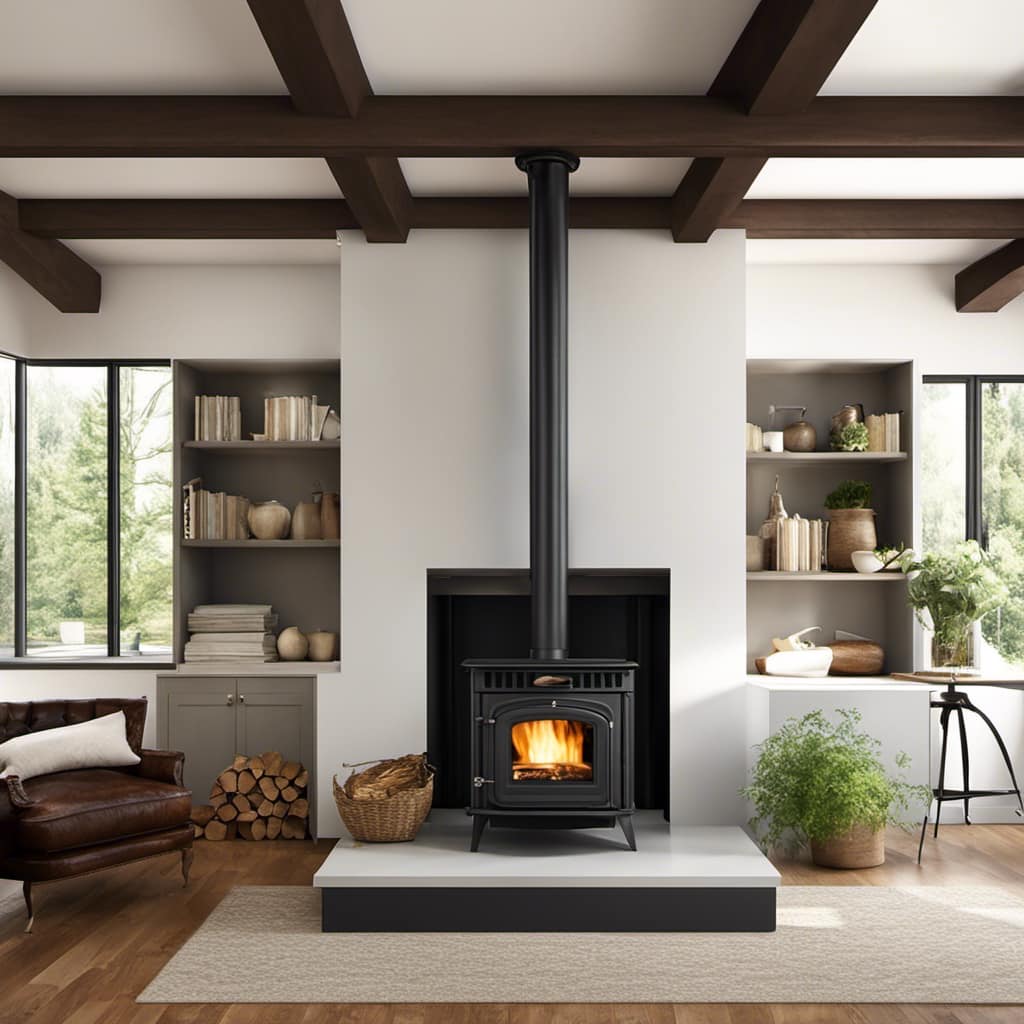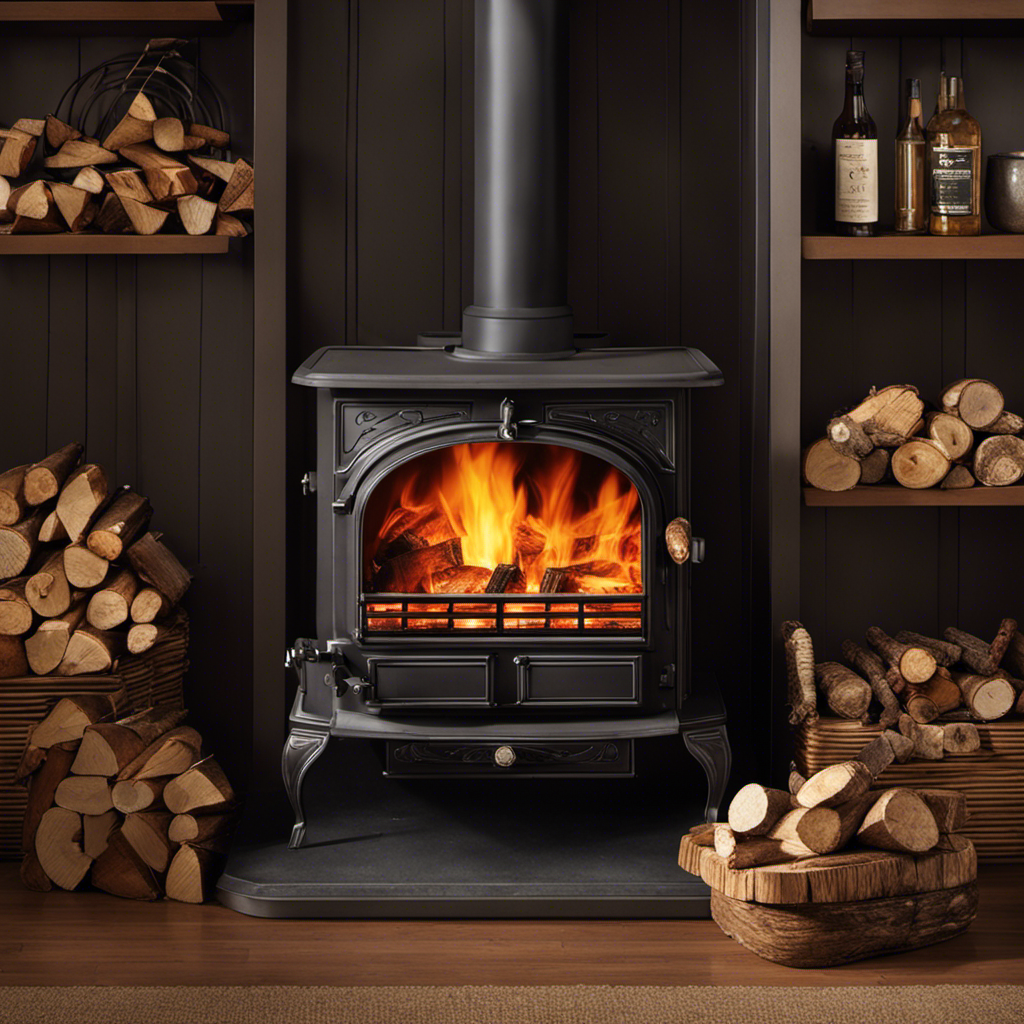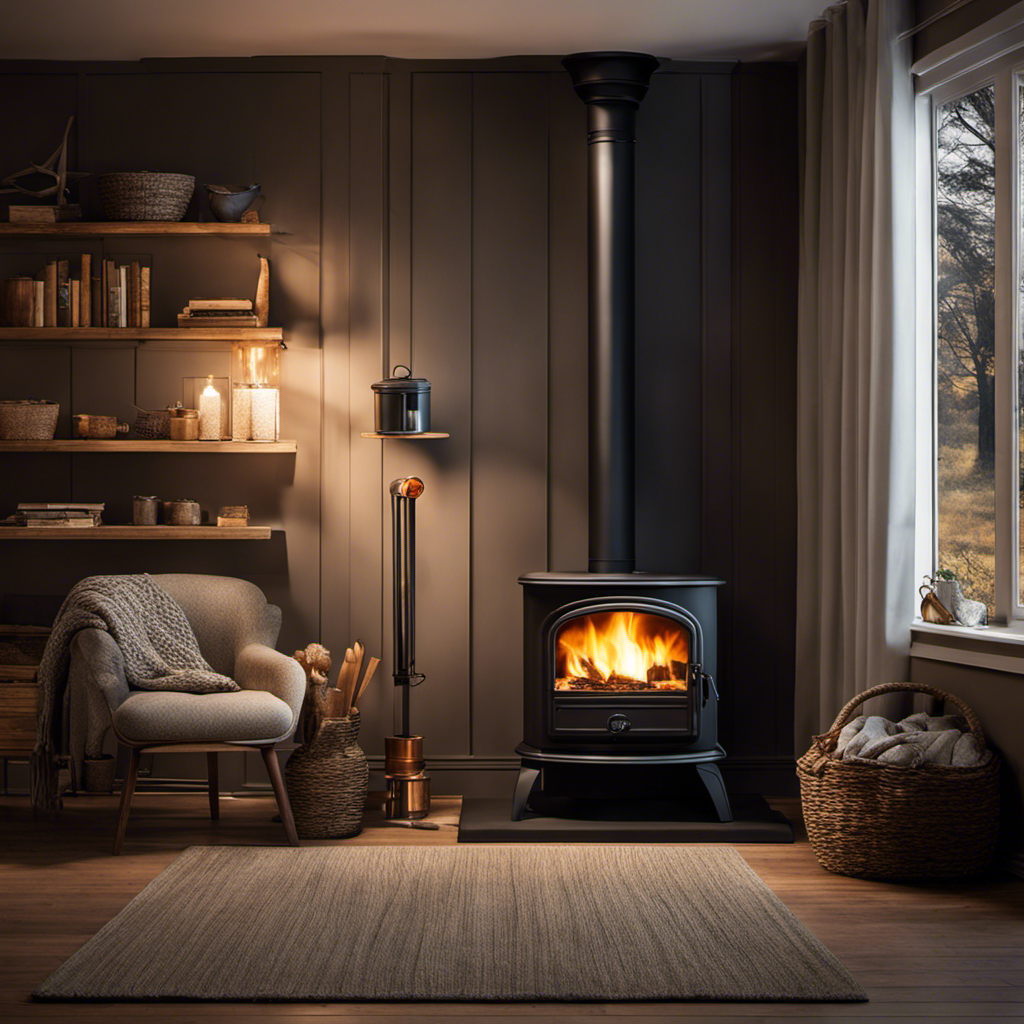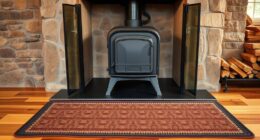
When I barely cracked open the door of my wood stove, a burst of smoke billowed out, obscuring the vision of the flames within. It was, to say the least, an unexpected experience.
But fear not, fellow wood stove owners. In this article, I will delve into the common causes of this smoky phenomenon and provide you with tips and techniques to minimize smoke when opening the door.
So, let’s shed some light on this smoky situation and get those fires burning clean and bright.
Key Takeaways
- Proper installation and maintenance of the stovepipe and chimney can help prevent smoke when opening the wood stove door.
- Using high-quality firewood and ensuring proper ventilation can reduce smoke production.
- Regular inspection and replacement of the gasket seal can prevent air leakage and smoke.
- Following proper burning techniques and practices, such as fully opening the damper and opening the door slowly, can minimize smoke when opening the wood stove door.
Common Causes of Smoke When Opening the Wood Stove Door
When I open the wood stove door, I often experience smoke due to common causes.
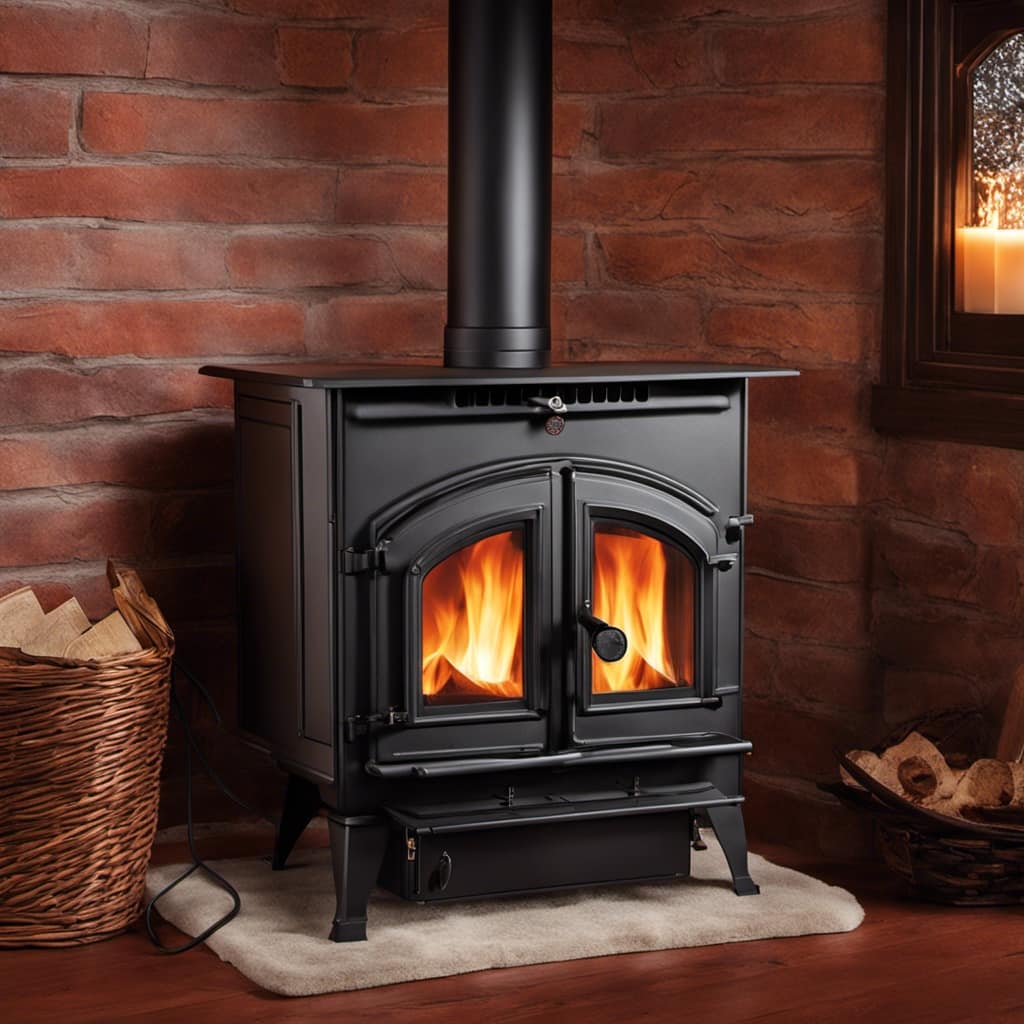
Poor ventilation can have serious implications when it comes to the functionality of a wood stove. One of the main reasons why smoke might enter the room when opening the door is a lack of sufficient airflow. This can occur if the stovepipe isn’t properly installed or if there are obstructions within the chimney.
Another common cause is the presence of creosote buildup. Over time, creosote can accumulate on the walls of the stovepipe and chimney, restricting the flow of smoke. To troubleshoot smoke issues, it’s important to ensure that the stovepipe and chimney are clean and free from any blockages.
Additionally, checking the air vents on the stove and adjusting them accordingly can help regulate the airflow and minimize smoke when opening the door.
Insufficient Draft: A Potential Culprit for Smoky Openings
I’ve noticed that the smoke gets worse every time I open the stove. This could be due to an insufficient draft, which is a common issue with wood stoves.
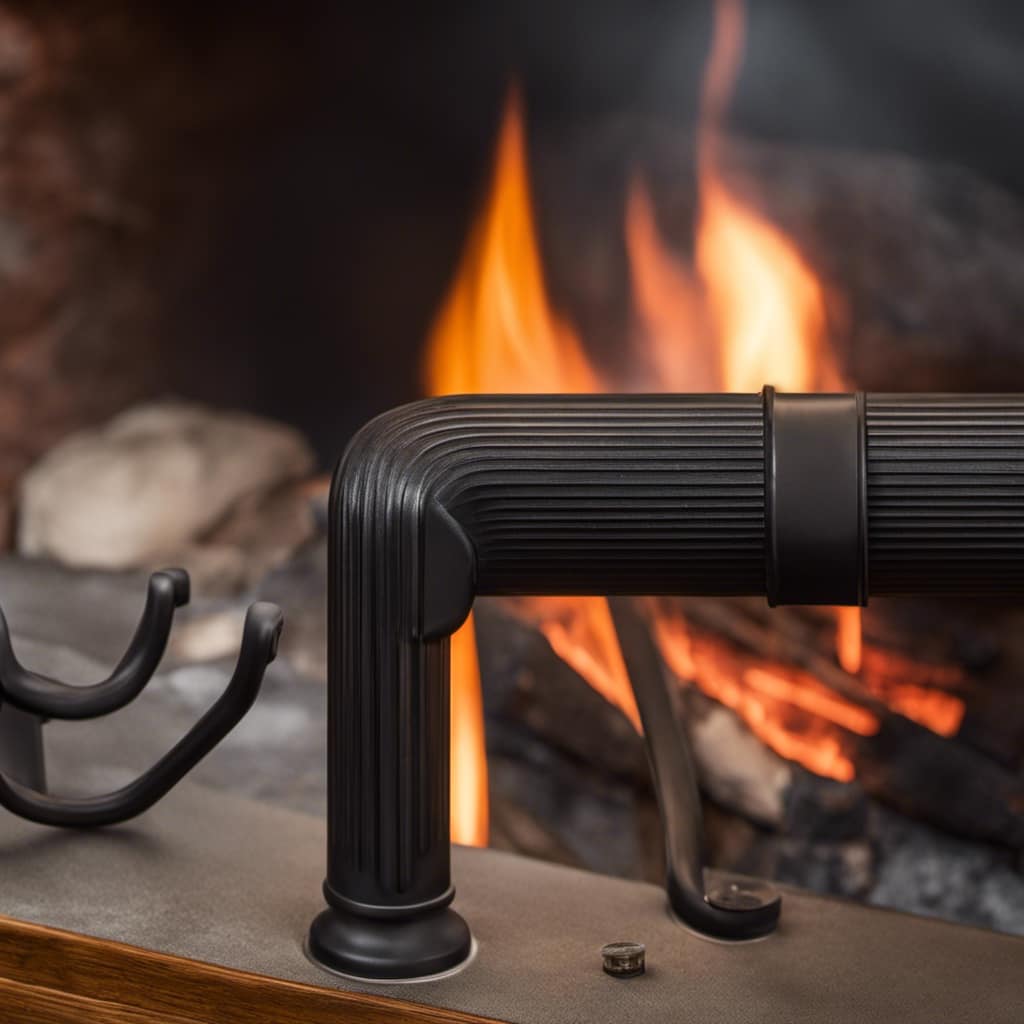
To troubleshoot draft issues, there are a few things you can check:
Ensure that the chimney is clean and free from any blockages. A blocked chimney can obstruct the flow of air and cause smoke to back up into the stove.
Verify that the damper is fully open. If it’s partially closed, it restricts the airflow and can lead to smoke leakage.
Check the seals around the stove door. Worn or damaged seals can allow air to escape, affecting the draft and causing smoke to enter the room.
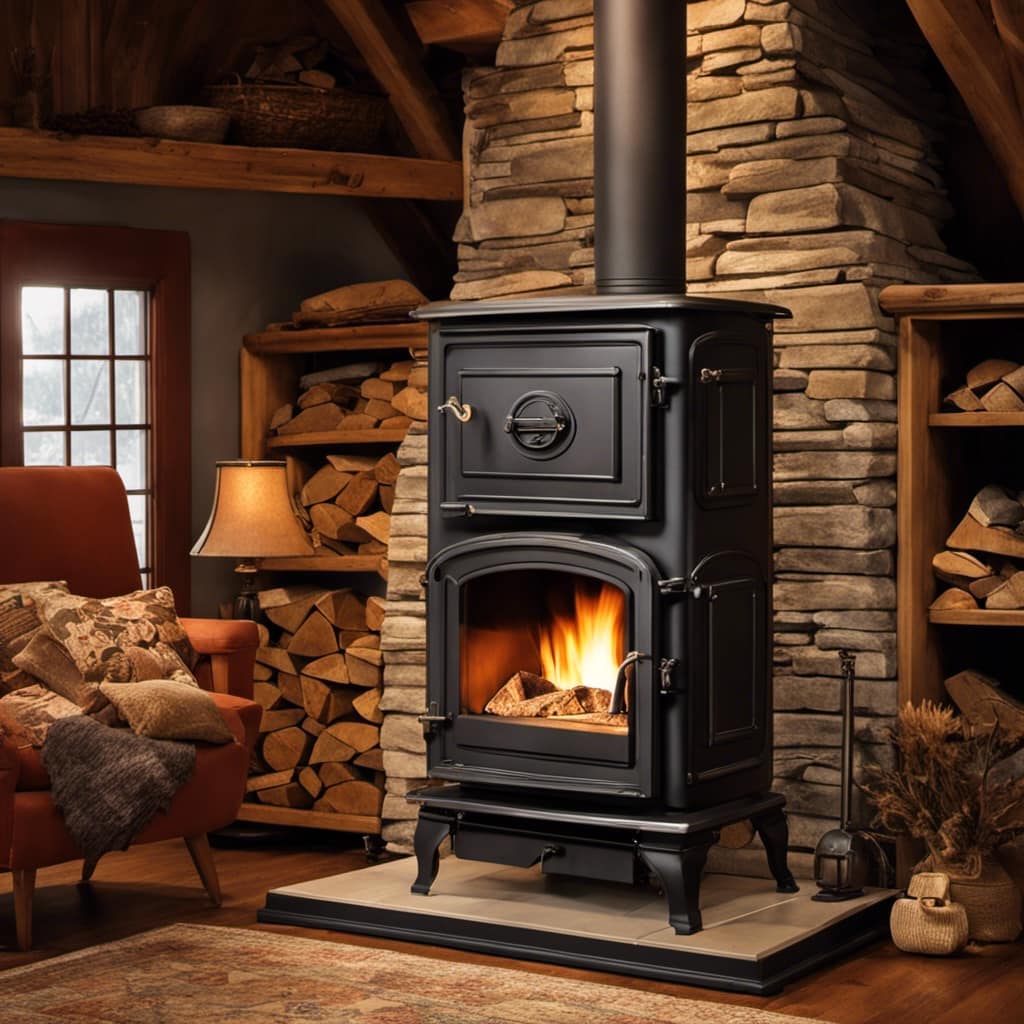
Make sure the stovepipe is properly installed and sealed. Any gaps or leaks can affect the draft and contribute to smoke issues.
Regularly maintain your wood stove by cleaning it and removing any ash or debris. Proper maintenance is crucial for ensuring optimal performance and preventing draft problems.
Addressing these troubleshooting steps and emphasizing the importance of proper wood stove maintenance will help improve the draft and reduce smoke when opening the stove.
Understanding the Impact of Fuel Quality on Smoke Production
To reduce smoke production, it’s essential to understand how the quality of fuel affects the performance of the stove. The combustion process within a wood stove relies on the interaction between the fuel, oxygen, and heat. When the fuel quality is poor, it can lead to incomplete combustion, resulting in more smoke production.
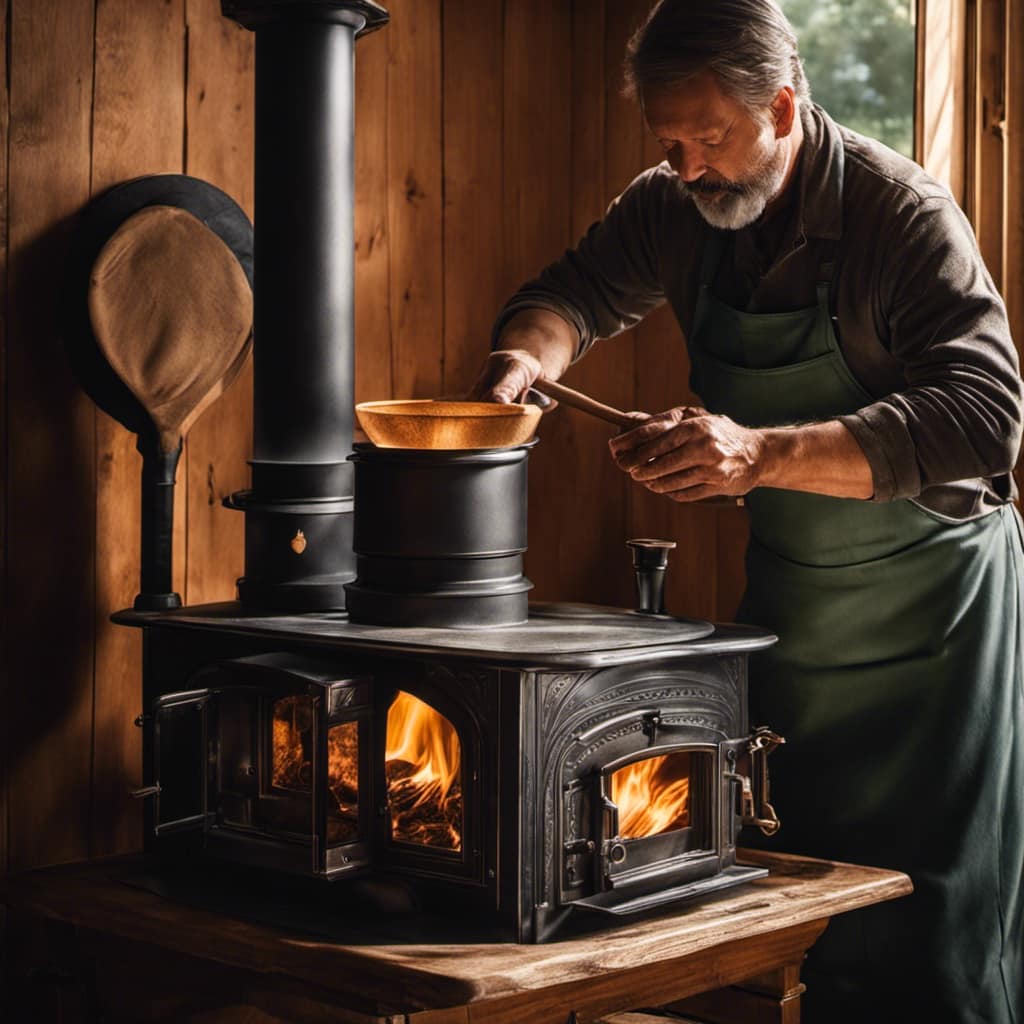
High-quality firewood, such as seasoned hardwood, has a lower moisture content, allowing it to burn more efficiently. This means that it produces less smoke and provides more heat output.
Proper ventilation is also crucial for reducing smoke production. Sufficient airflow helps to supply the fire with the oxygen it needs for complete combustion, preventing the build-up of smoke. Without proper ventilation, smoke can easily escape into the room when the stove door is opened.
Therefore, ensuring proper ventilation and using high-quality fuel are key factors in reducing smoke production when operating a wood stove.
Damaged Gasket Seal: An Often Overlooked Source of Smoke
The damaged gasket seal on my wood stove is often overlooked as a source of smoke. When the gasket seal becomes compromised, it can allow air to escape, resulting in poor combustion and the release of smoke into the room. This issue is commonly caused by wear and tear over time or improper stove installation.
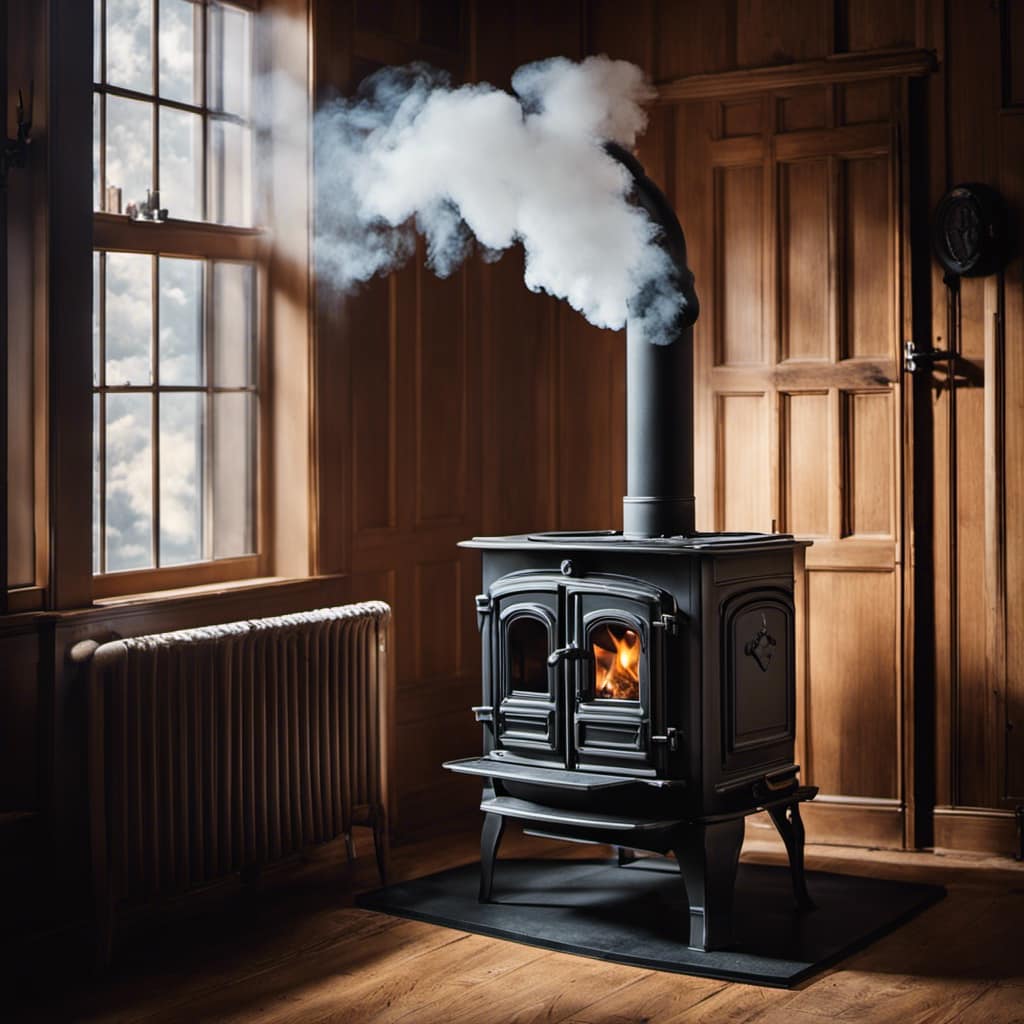
It’s important to address this problem promptly to ensure the efficient and safe operation of the wood stove. Here are some key points to consider:
- Regular maintenance: Inspect the gasket seal regularly and replace it if necessary.
- Proper installation: Ensure that the gasket seal is installed correctly to prevent air leakage.
- Quality materials: Use high-quality gasket seals that are designed for wood stoves.
- Seal adjustment: Check the seal’s tightness and adjust it if needed to achieve proper airflow control.
- Addressing other issues: If the gasket seal is damaged due to a damaged door hinge or improper stove installation, address those issues as well to prevent further smoke leakage.
Could a Dirty Flue Cause My Wood Stove to Smoke When I Open the Door?
Yes, a dirty flue could cause your wood stove to smoke when you open the door. Regular cleaning of the wood stove flue is essential to prevent buildup and ensure proper ventilation. Neglecting cleaning wood stove flue can lead to smoke backing up into your home, creating a hazardous situation.
Tips and Techniques for Minimizing Smoke When Opening the Wood Stove Door
When I open the door of my wood stove, I can minimize the amount of smoke by following these tips and techniques. Proper ventilation is crucial during door openings to prevent smoke from escaping into the room.
Firstly, I ensure that there’s enough air supply by fully opening the air intake damper before opening the door. This allows for a steady flow of oxygen into the firebox, promoting efficient combustion and reducing smoke production.
Next, I open the door slowly and gradually, giving the smoke inside the stove a chance to escape through the chimney. Rapidly opening the door can create a sudden rush of oxygen, causing the fire to flare up and produce more smoke.
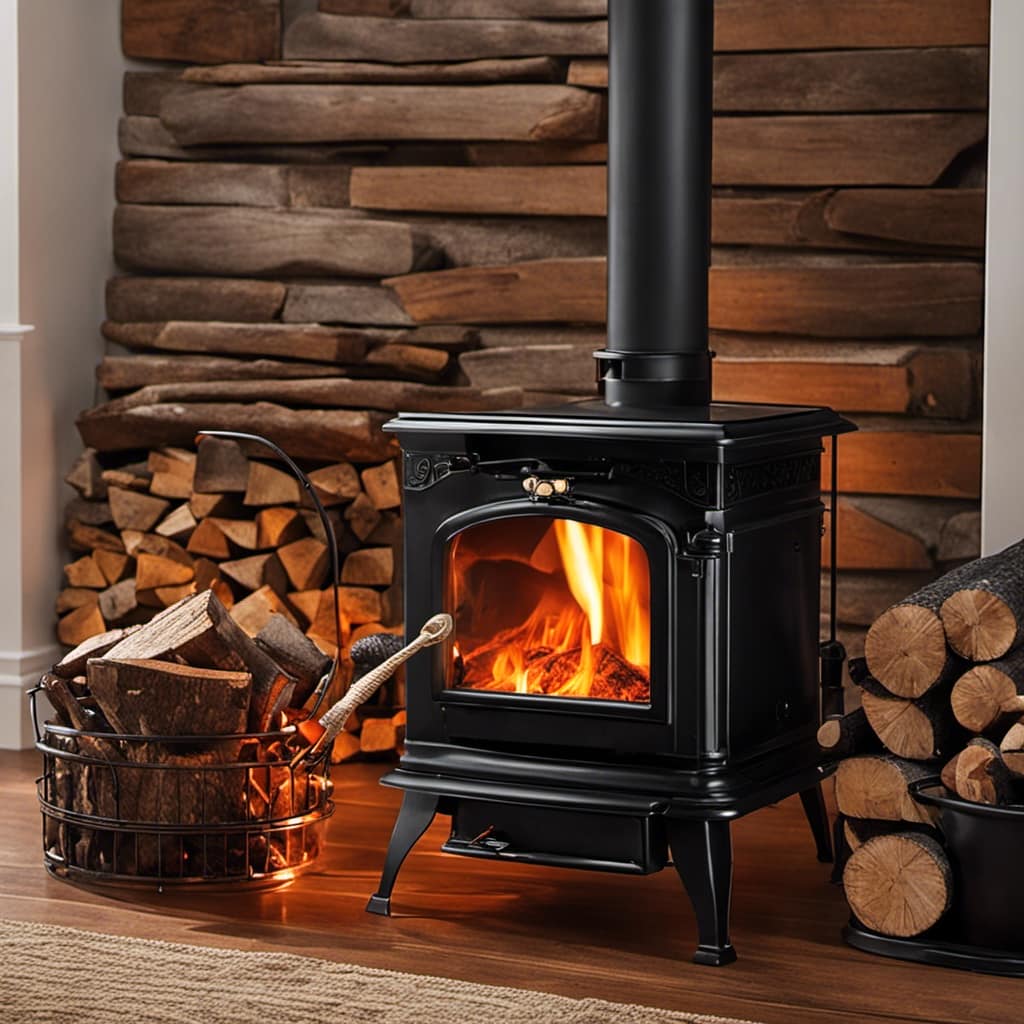
Lastly, I avoid adding new logs or fuel just before opening the door, as this can disrupt the burning process and result in increased smoke production.
Frequently Asked Questions
How Can I Tell if My Wood Stove Has an Insufficient Draft?
Common causes of insufficient draft in wood stoves include a blocked chimney, improper air intake, or a poorly designed stove. Improving the draft can be achieved by cleaning the chimney, adjusting the air controls, or installing a draft-inducing fan.
What Are the Signs of a Damaged Gasket Seal on a Wood Stove?
When a wood stove’s gasket seal is damaged, signs of damage include smoke escaping when the door is opened. It’s crucial to inspect and replace the gasket seal promptly to ensure efficient and safe operation.
Can Using Low-Quality Fuel in My Wood Stove Cause Excessive Smoke When Opening the Door?
Using low-quality fuel in my wood stove can cause excessive smoke when opening the door. To prevent this, ensure you use properly seasoned firewood and avoid burning wet or unseasoned wood. Regularly clean and maintain your stove to optimize its performance.
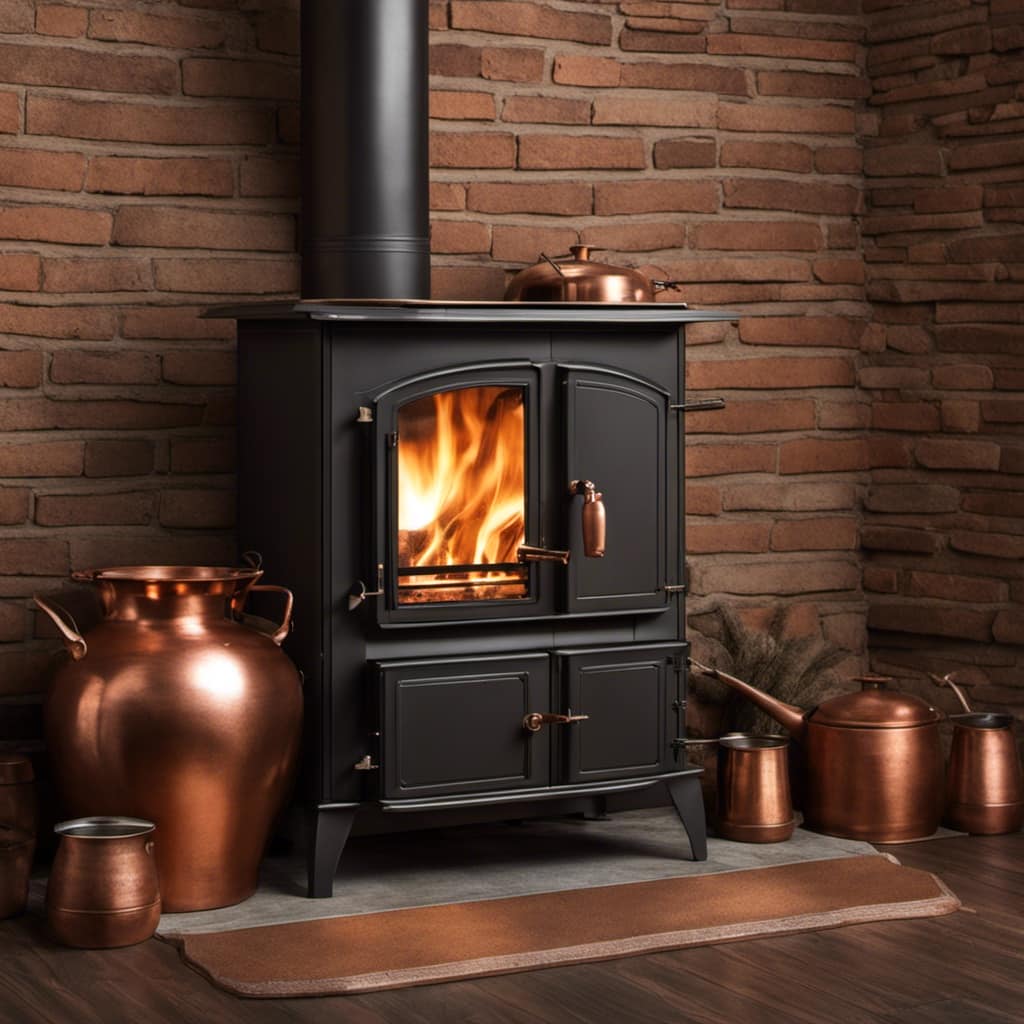
Are There Any Specific Techniques or Techniques for Minimizing Smoke When Opening the Wood Stove Door?
When opening the wood stove door, techniques for reducing smoke emission include: opening the door slowly, creating a small opening to allow air to flow gradually, and using high-quality fuel to minimize smoke production.
Is It Normal for a Wood Stove to Produce Some Smoke When the Door Is Opened, Even if Everything Is Working Properly?
When opening a wood stove door, it’s normal for some smoke to be produced if everything is working properly. Common causes include inadequate air flow or excessive moisture. To reduce smoke, ensure proper air flow and use dry, seasoned wood.
Conclusion
In conclusion, when it comes to combating smoke when opening the wood stove door, it’s imperative to address potential issues such as insufficient draft, fuel quality, and a damaged gasket seal.
By understanding and addressing these factors, you can minimize the smoke and maximize the efficiency of your wood stove.
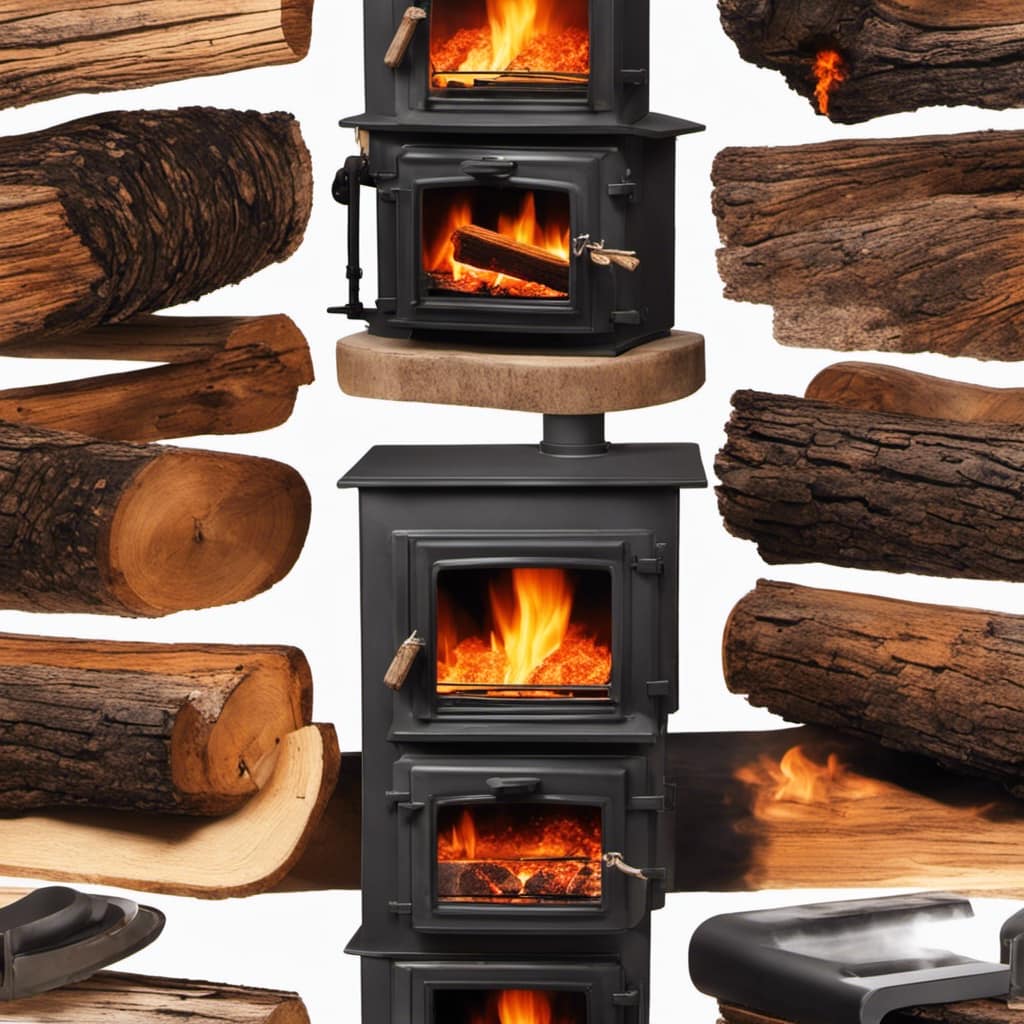
Remember, just like unraveling the secrets of a mysterious puzzle, solving the smoke issue requires careful attention to detail and a touch of finesse.
Growing up surrounded by the vast beauty of nature, Sierra was always drawn to the call of the wild. While others sought the comfort of the familiar, she ventured out, embracing the unpredictable and finding stories in the heartbeat of nature.
At the epicenter of every remarkable venture lies a dynamic team—a fusion of diverse talents, visions, and passions. The essence of Best Small Wood Stoves is crafted and refined by such a trio: Sierra, Logan, and Terra. Their collective expertise has transformed the platform into a leading authority on small wood stoves, radiating warmth and knowledge in equal measure.


